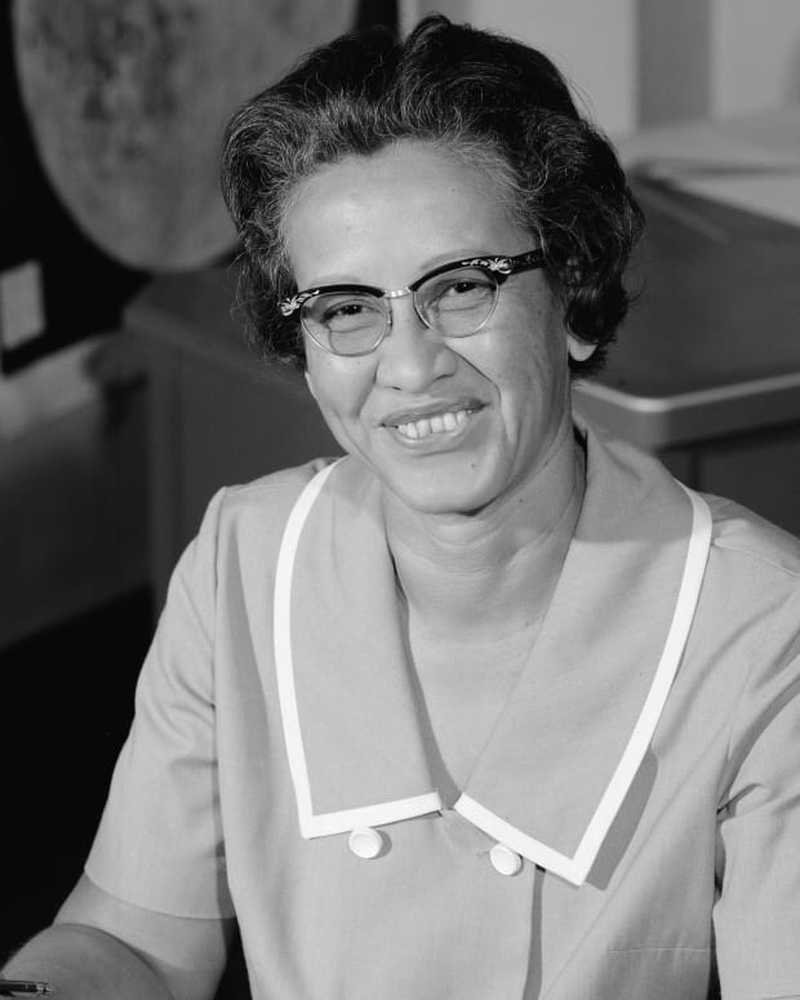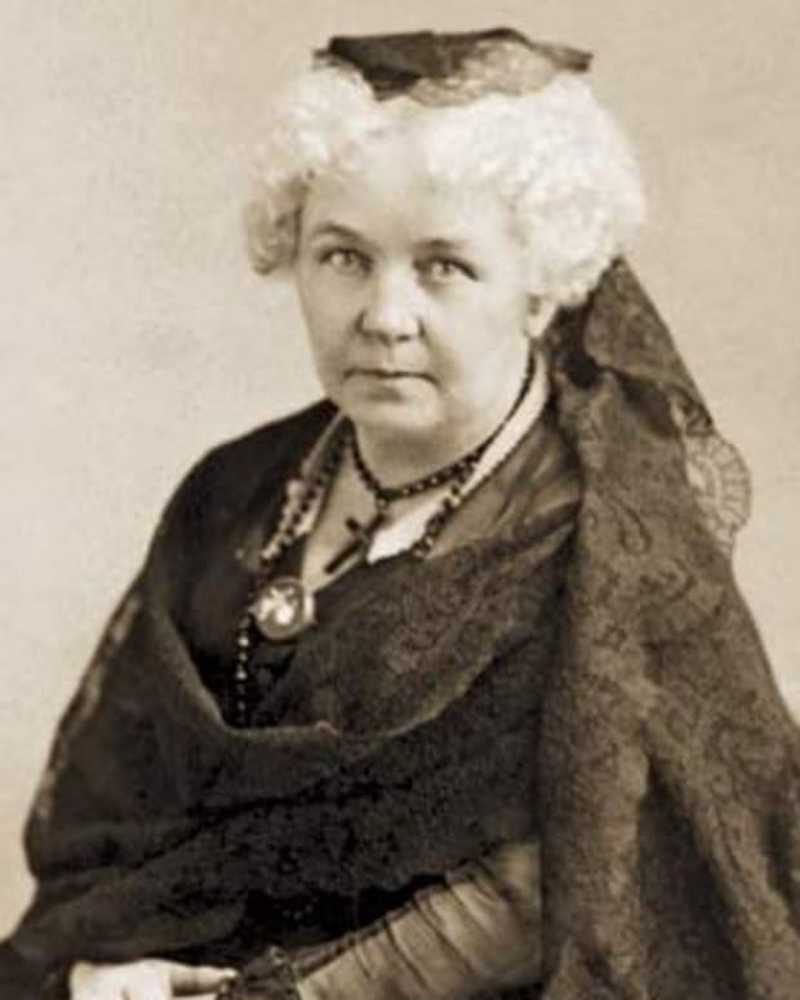
Russell Fisher
13103
59730
28
NASA's "ordinateurs humains & # x201D; Katherine Johnson, Mary Jackson et Dorothy Vaughan ont pénétré dans nos cœurs via le film à succès Figures cachées, mais il y a tellement d'autres femmes scientifiques noires fantastiques qui méritent l'attention. Pour célébrer le Mois de l'histoire des Noirs, voici quelques autres femmes extraordinaires qui se sont taillé une place dans la science.
Alice Ball (Chimiste)

Alice Ball
(Photo: domaine public)
Alice Augusta Ball est née le 24 juillet 1892 à Seattle, Washington, de Laura, photographe, et de James P. Ball, Jr., avocat. Ball obtint des diplômes de premier cycle en chimie pharmaceutique (1912) et en pharmacie (1914) de l'Université de Washington. En 1915, Ball est devenue la toute première femme afro-américaine et la toute première femme à obtenir un diplôme de maîtrise. diplôme en chimie du College of Hawaii (maintenant connue sous le nom d'University of Hawaii). Elle a également été la toute première femme enseignante en chimie dans la même institution..
Ball a beaucoup travaillé en laboratoire pour mettre au point un traitement efficace pour les personnes atteintes de la maladie de Hansen (lèpre). Ses recherches l'ont amenée à créer le premier traitement injectable à base d'huile de chaulmoogra, un agent topique jusque-là modérément efficace, utilisé pour traiter la lèpre dans les médecines chinoise et indienne. La rigueur scientifique de Ball a permis de mettre au point une méthode très efficace pour soulager les symptômes de la lèpre, connue plus tard sous le nom de "Méthode de la boule", & # x201D; qui a été utilisé sur des milliers d'individus infectés pendant plus de 30 ans jusqu'à l'introduction de médicaments sulfonés. Malheureusement, Ball meurt le 31 décembre 1916 à l'âge de 24 ans des suites d'une complication résultant de l'inhalation de chlore gazeux dans un accident de laboratoire. Au cours de sa brève vie, elle n'a pas pu voir l'impact de sa découverte..
En outre, ce n’est que six ans après sa mort, en 1922, que Ball obtint le crédit qu’elle méritait. Jusque-là, le Dr Arthur Dean, président du College of Hawaii, avait pleinement reconnu le travail de Ball. Malheureusement, il était courant que les hommes s’appuient sur les découvertes des femmes et Ball en soit victime (découvrez trois autres femmes scientifiques dont les découvertes sont à mettre au crédit des hommes). Elle a également été pratiquement oubliée de l'histoire scientifique pendant plus de 80 ans. Puis, en 2000, l’Université d’Hawaï-Manoa a rendu hommage à Ball en plaçant une plaque de bronze devant un arbre chaulmoogra sur le campus et l’ancien lieutenant-gouverneur de Hawaï, Mazie Hirono, a déclaré le 29 février la Journée Alice Ball. & # X201D ; En 2007, l’Université d’Hawaï lui a décerné à titre posthume les Regents & # x2019; Médaille de distinction.
Mamie Phipps Clark (psychologue sociale)

Dr. Mamie Phipps Clark
(Photo: Arty Pomerantz_New York Post Archives _ (c) NYP Holdings, Inc. via Getty Images)
Mamie est née le 18 avril 1917 à Hot Spring, en Arkansas, de Harold H. Phipps, médecin, et de Katy Florence Phipps, une femme au foyer. Elle a reçu plusieurs bourses d'études et a choisi de fréquenter l'Université Howard en 1934 en tant que mineure en mathématiques, majeure en physique. Elle y a rencontré Kenneth Bancroft Clark, un maître'Étudiante en psychologie, qui est devenue plus tard son mari et qui l'a convaincue de poursuivre des études de psychologie en raison de son intérêt pour le développement de l'enfant. En 1938, Clark obtint sa licence avec mention très bien de l’Université Howard et poursuivit ensuite ses études de maîtrise en psychologie, puis son doctorat à l’Université de Columbia. En 1943, Clark devint la première femme noire à obtenir un doctorat en psychologie de Columbia.
Les recherches de Clark se sont concentrées sur la définition de la conscience raciale chez les jeunes enfants. Son maintenant tristement célèbre & # x201C; Test de poupées & # x201D; fourni des preuves scientifiques qui ont influencé Brown v. Board of Education (1954). Dans ce test, plus de 250 enfants noirs âgés de 3 à 7 ans, dont environ la moitié fréquentaient des écoles séparées dans le sud (Arkansas) et environ la moitié dans des écoles mixtes du nord-est (Massachusetts), ont été invités à indiquer leurs préférences en matière de poupées peau aux cheveux noirs ou peau blanche aux cheveux jaunes). Leurs conclusions du & # x201C; Test des poupées & # x201D; ont montré que la majorité des enfants noirs souhaitaient jouer avec la poupée blanche (67%) et ont indiqué que celle-ci était la "belle" & # x201D; poupée (59%), a indiqué que la poupée brune avait un look & # x201C; mauvais & # x201D; (59%) et a choisi la poupée blanche comme étant de belle couleur & # x201D; (60%). Les enfants noirs des écoles du Nord mixtes sur le plan culturel ont ressenti davantage d'inquiétude face aux injustices raciales révélées par cette expérience que ceux des écoles séparées du Sud qui se sentaient plus passifs face à leur statut inférieur. Clark et son équipe de recherche ont conclu que l'intégration raciale dans les écoles était idéale pour assurer un développement sain des enfants..
Clark a ensuite travaillé comme conseiller au Riverdale Home for Children de New York. En 1946, Clark inaugure à Harlem le Centre Northside pour le développement de l'enfant, qui est l'un des premiers organismes à fournir des services psychologiques complets et des programmes éducatifs aux enfants de couleur vivant dans la pauvreté. Clark a également travaillé avec le projet Harlem Youth Opportunities Unlimited, le programme national Head Start et de nombreuses autres institutions éducatives et philanthropiques. Clark est décédé d'un cancer à l'âge de 65 ans le 11 août 1983.
Joycelyn Elders, M.D. (ancien chirurgien général des États-Unis)

Dr. Joycelyn Elders
(Photo: KORT DUCE_AFP_Getty Images)
Minnie Lee Jones est née le 13 août 1933 à Schaal, dans l'Arkansas. Elle était la fille de métayers, Haller Reed et Curtis Jones et l'aîné de huit enfants. La famille vivait dans une cabine de trois pièces sans plomberie ni électricité. Bien que vivant dans la pauvreté et fréquentant des écoles ségrégées par la ségrégation raciale à des kilomètres de son domicile, Minnie a obtenu son diplôme en tant que pratiquante de sa classe. Elle a changé de nom et s'appelle désormais Minnie Joycelyn Lee à l'université. Elle a pour la plupart cessé d'utiliser le nom & Minnie; & # x201C; Minnie, & # x201D; qui s'appelait sa grand-mère. En 1952, Joycelyn reçut un B.S. en biologie du Philander Smith College de Little Rock, dans l'Arkansas, devenant la première de sa famille à fréquenter l'université. Elle a brièvement travaillé comme aide-infirmière dans un hôpital pour anciens combattants à Milwaukee, puis a rejoint les rangs de l’Armée américaine.'s Medical Specialist Corps en 1953. Joycelyn épousa Oliver Elders en 1960 alors qu’il fréquentait l’école de médecine de l’Université de l’Arkansas avec l’aide de G.I. Bill où elle a obtenu sa maîtrise en 1960 et sa maîtrise. en biochimie en 1967. En 1978, les aînés sont devenus la première personne de l’État de l’Arkansas à recevoir la certification de conseil en endocrinologie pédiatrique. Les anciens ont travaillé à l'Université de l'Arkansas en tant qu'assistant, professeur associé et professeur ordinaire de pédiatrie des années 1960 à 1987, avant de revenir plus tard en tant que professeur émérite..
En 1987, Bill Clinton, alors gouverneur, a nommé Elders Directeur du département de la santé de l'Arkansas, faisant d'elle la première femme afro-américaine à occuper ce poste. Durant son mandat, elle a réussi à réduire le nombre de grossesses précoces, à élargir la disponibilité des services liés au VIH et à travailler sans relâche pour promouvoir l’éducation sexuelle. En 1992, elle a été élue présidente de l’Association des responsables de la santé des États et des territoires. En 1993, Bill Clinton, alors président de la République, la nomma Surgeon General des États-Unis, faisant d'elle la première afro-américaine et la deuxième femme (après Antonia Novello) à occuper ce poste. Ses opinions controversées sur la santé sexuelle, y compris ses déclarations à la conférence sur la masturbation aux États-Unis, ont suscité une vive controverse et ont conduit à sa démission forcée en décembre 1994..
Les aînés ont raconté l'histoire de sa vie dans l'autobiographie, De métayer's Fille au chirurgien général des États-Unis d'Amérique (1997). Elle est actuellement professeur émérite de pédiatrie à l'Université de l'Arkansas pour les sciences médicales et participe à de nombreuses manifestations en public pour promouvoir la légalisation de la marijuana et l'amélioration de l'éducation sexuelle..
Femmes scientifiques noires en fête
Au-delà de ces femmes exceptionnellement fantastiques, il y en a beaucoup plus. Il y a Rebecca Lee Crumpler qui a été la première femme afro-américaine aux États-Unis à obtenir un doctorat en médecine en 1864. Il y a Marie Maynard Daly, qui est devenue la première femme afro-américaine à obtenir un doctorat en chimie aux États-Unis. en 1947. Il y's Patricia Bath, première Afro-Américaine à terminer sa résidence en ophtalmologie et première femme médecin afro-américaine à obtenir un brevet médical. Bien sûr, aucune liste ne serait complète sans l'astronaute Mae Jemison, qui est devenue la première femme afro-américaine dans l'espace en 1992. Enfin, la biologiste moléculaire Mary Styles Harris mérite d'être reconnue, car elle a sensibilisé davantage aux problèmes médicaux, y compris la faucille. -Anémie cellulaire et cancer du sein. Ces femmes et tant d’autres ont et continueront d’obtenir une place de choix dans l’histoire pour leurs contributions à la science..
- Mots clés
- termes:
- Histoire noire
 Par Meredith Worthen
Par Meredith WorthenPLUS D'HISTOIRES DE BIOGRAPHIE
 Histoire et culture
Histoire et culture3 femmes scientifiques dont les découvertes ont été attribuées à des hommes
Voici un aperçu de trois femmes scientifiques qui ont été des pionnières à une époque où les hommes dominaient le domaine de la science.
- Par Meredith Worthen25 juin 2019
 Histoire et culture
Histoire et cultureMois de l'histoire des Noirs: Photos de Booker T. Washington symbolisant l'autonomisation des Noirs
Dans notre couverture continue du Mois de l'histoire des Noirs, l'historienne Daina Ramey Berry a demandé aux conservateurs du Musée national de l'histoire et de la culture afro-américaines de partager les histoires remarquables d'importantes personnalités afro-américaines. Aujourd'hui, nous célébrons Booker T. Washington, éducateur et dirigeant influent, et des artefacts de son travail qui représentaient l'indépendance et l'autonomisation des Noirs..
- Par Daina Ramey Berry17 juin 2019
 Histoire et culture
Histoire et cultureMois de l'histoire des Noirs: L'impact de la jeunesse noire sur le mouvement des droits civiques
Le dernier jour du mois de l'histoire des Noirs, nous examinons comment les jeunes ont joué un rôle central dans les débuts du Mouvement pour les droits civils..
- Par Greg Timmons le 25 juin 2019
 Histoire et culture
Histoire et cultureKatherine Johnson et 9 autres pionnières noires en sciences
Ces femmes afro-américaines en STEM ont brisé la barrière raciale et sont montées en flèche au sommet de leur champ.
- Par Brad WitterJuin 21, 2019
 Histoire et culture
Histoire et cultureFaits peu connus sur l'histoire des Noirs
Février est le mois de l'histoire noire, ce qui signifie que chaque année, nous nous souvenons des Afro-Américains qui ont marqué l'histoire et ont fait de l'Amérique ce qu'elle est aujourd'hui. Voici 120 faits que vous ignorez peut-être.
- Par Bio StaffJuin 24, 2019
 Histoire et culture
Histoire et cultureShirley Chisholm et les 9 autres premières femmes noires au Congrès
Ces pionniers politiques ont brisé les barrières raciales et sexistes au cours de leur mandat de membre de la Chambre des représentants.
- Par Eudie PakJuin 25, 2019
 Histoire et culture
Histoire et cultureLe Mois de l'histoire des Noirs: une photo rare et un châle royal rendent hommage à la force et au courage de Harriet Tubman
Dans notre couverture continue du Mois de l'histoire des Noirs, l'historienne Daina Ramey Berry a demandé aux conservateurs du Musée national de l'histoire et de la culture afro-américaines de partager les histoires remarquables d'importantes personnalités afro-américaines. Aujourd'hui, voyez une photo rare de Harriet Tubman à son apogée et découvrez comment la reine Victoria a honoré le courageux combattant de la liberté avec un cadeau royal.
- Par Daina Ramey BerryJuin 18, 2019
 Histoire et culture
Histoire et cultureMois de l'histoire des Noirs: Photos de Frederick Douglass et de son «étoile du Nord» à l'occasion de son 200e anniversaire
Dans notre couverture continue du Mois de l'histoire des Noirs, l'historienne Daina Ramey Berry a demandé aux conservateurs du Musée national de l'histoire et de la culture afro-américaines de partager les histoires remarquables d'importantes personnalités afro-américaines. Aujourd'hui, à l'occasion de ses 200 ans, nous célébrons l'abolitionniste Frederick Douglass qui a utilisé le pouvoir de son image et de ses paroles pour diffuser son message de liberté et d'égalité aux générations futures..
- Par Daina Ramey BerryJuin 18, 2019
 Histoire et culture
Histoire et cultureLe mouvement des droits des femmes et les femmes de Seneca Falls
Les 19 et 20 juillet 1848, la Convention de Seneca Falls a déclenché et solidifié le mouvement des droits des femmes en Amérique. Retour sur les femmes qui ont dirigé l'événement historique et comment il a inspiré des générations d'activistes.
- Par Meredith Worthen17 juin 2019











